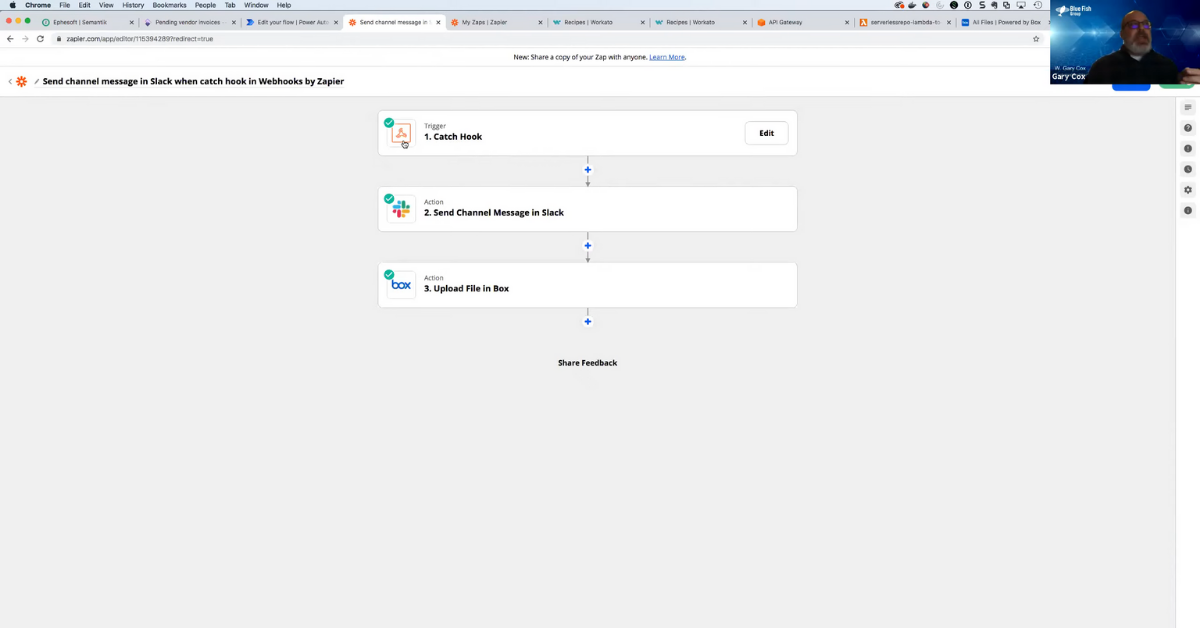Many years and several jobs ago, I was hired to manage a procurement system development project for a large construction company in Houston. In the first week, the IT manager said “I have this sales guy who says he can solve all our problems nagging me every week. Let him take you to lunch and see what you think.”
Always on the lookout for a free lunch, I contacted the sales guy and listened to his spiel. He promised to make all of our myriad procurement and accounting systems talk seamlessly with each other and with our vendors with the magic of INTERNET. (This was in the 90s and tech startups were a dime a dozen.) I asked him for technical documentation. I asked him for a demonstration. I asked him for references. I never got any of these things, so I stopped answering his phone calls.
Turns out, I was right to be skeptical. The integration automation tools (Integration Platform as a Service, or IPAAS) that we use and love today weren’t on the market yet. Here’s a brief history:
- IBM WPS – One of the first automation tools developed, WPS launched in 2005. It was pretty technical and never found mainstream success, but it lives on in the enterprise market as IBM App Connect.
- Yahoo Pipes – Launched in 2007, Pipes was a web app to create simple automations with a drag and drop interface. It was one of the first visual tools in this space and one of the first to incorporate APIs.
- IFTTT (If This, Then That) – Launched in 2011. Half a year after its launch, it was home to over one million automations. IFTTT was the first service to offer a plug-and-play approach to automation at a massive scale, and it was free!
- Zapier – Also started in 2011 by a couple of jazz musicians from Missouri. Unlike IFTTT, Zapier allowed users to get as techie as they wanted, allowing the connection of dozens of apps into detailed workflows, with filters.
Today there are multiple choices for integration automation which provide a low-coding/no-coding alternative to application integration. It’s frustrating and expensive to implement off-the-shelf solutions and then have to hire or contract developers to build custom middleware to make everything work together. There’s likely an automation tool already on the market that will do the job instead!
There are essentially two types of integration tools available. One is integration automation built into a specific application. An example of this is Ephesoft’s Semantik Invoice with Workflow. Semantik allows Ephesoft users to automate the workflow of invoices into accounts payable by retrieving invoice documents from a dedicated email queue and extracting data values from those invoice documents using AI. The example below shows an imported invoice on the left with the extracted data fields on the right, so that you can easily verify the AI extraction.

Then, using Semantik Workflow, powered by Workato, that AP data can be integrated with a variety of cloud and on-prem systems out of the box, such as Alfresco, Box, MS Dynamics, QuickBooks Online, Oracle NetSuite, Salesforce, Workday, etc.
But you don’t have to have a built-in integration solution to take advantage of low code/no code automations! Tools like Zapier enable you to create sophisticated custom workflows (called Zaps) quickly with very little effort. Using a menu-driven setup tool, you can define an API or webhook trigger (like receiving a new invoice in Ephesoft Semantik), define one or more actions, and modify those actions with conditions that you define. In this example, the receipt of an invoice triggers a message to be sent in Slack and a copy of the invoice file to be sent to a designated folder in Box. It’s easy to test this workflow right from the Zap setup page and immediately see the output in your Slack and Box applications.

Workato workflow setup is very similar to Zapier, with 1000+ out of the box integrations available to quickly create automations. What Zapier calls a “Zap,” Workato calls a “Recipe.” Setting up a Recipe is ridiculously easy. You can start a new Recipe from scratch or clone an existing Recipe. Select an API, a webhook, or create a scheduled trigger.

With these plus a handful of other great IPAAS offerings out there, custom ecosystem integrations may become a dusty artifact of the past. Capabilities and pricing models vary, so consider your unique priorities, survey the market, and start integrating!
For a hands-on demonstration of some of these tools in action, check out our “What Did We Learn” webinar where Lisa Hill and Gary Cox geek out over how easy it is to build out integrations across your existing ecosystem.



